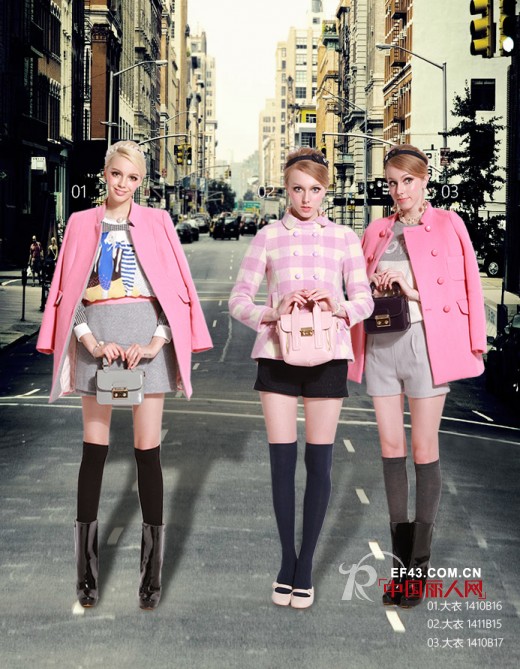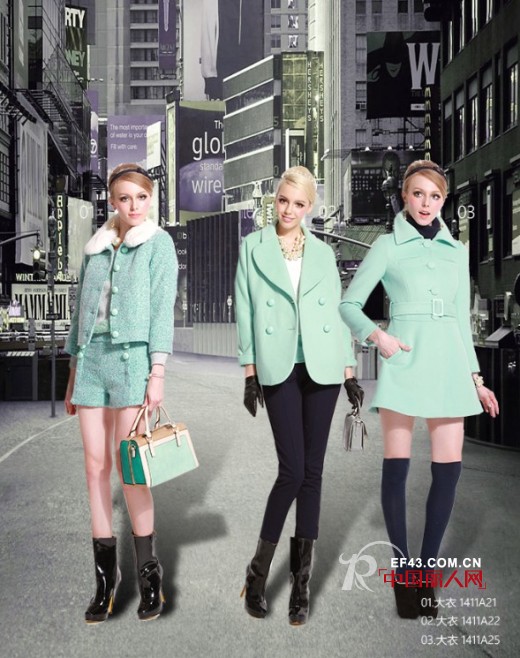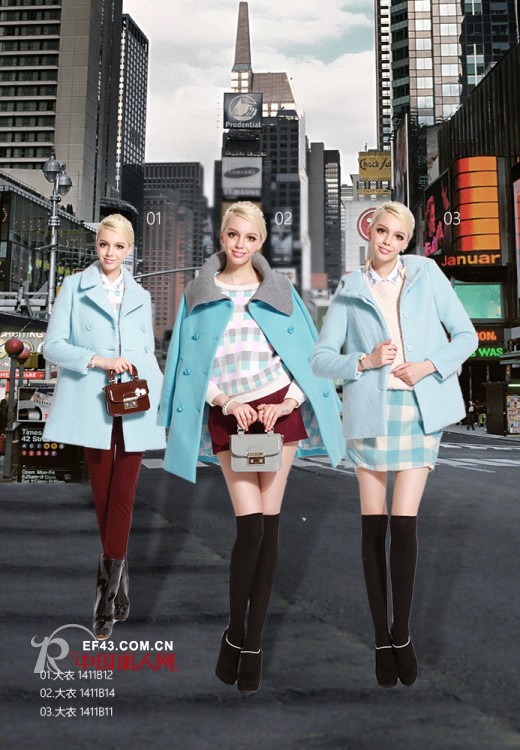With the arrival of winter, the color of the streets seems dimmer, and the mood is dull. At this time, may wish to give yourself a color coat. Vivid colors can be swept away by the heavy winter and the haze, as if the mood has jumped up! Sakura powder, ocean blue, lime green are the most In color system. Style is prone to profile and long section, and the coat is also colorful with the way: Coat across the shoulder wearing the law to make you stylish doubled; or without having to buckle the coat dead, take the dark Department of clothing to reduce over-Yan Vulgar; or choose a large area of ​​color collision, Fun color collision in the early winter season. Still hesitating? Put on the color coat soon!

Pink - Romantic fantasy in the city corner
Girls prefer to immerse themselves in the fairy tale world of their own fantasies. When there are no more singing songs of the Larks over the city, the girls need a space to temporarily escape the reality. A pink winter coat is like a magical flower blooming on a snow-covered cliff, bringing girls back to the world of fairy tales.

Green - the color of life
Into the winter, 10,000 trees dying, in the city we can see less and less green, not as good as its creation. Please put on a green coat for yourself, to add vitality and vitality to this dull early winter.

Blue - interpretation of the smart winter
Winter, a touch of blue and let you in the atmosphere of all things lull feel fresh and comfortable moment, no dull boring black, no warm bright Ming Yan, low-key, wear out their own fashion.
This article Source: betu Betu Women Recommended
Tie-dye is a modern term invented in the mid-1960s in the United States (but recorded in writing in an earlier form in 1941 as "tied-and-dyed", and 1909 as "tied and dyed" by Luis C. Changsut, referenced below)[1] for a set of ancient resist-dyeing techniques, and for the products of these processes. The process of tie-dye typically consists of folding, twisting, pleating, or crumpling fabric or a garment and binding with string or rubber bands, followed by application of dye(s).[2] The manipulations of the fabric prior to the application of dye are called resists, as they partially or completely prevent the applied dye from coloring the fabric. More sophisticated tie-dyes involve additional steps, including an initial application of dye prior to the resist, multiple sequential dye and resist steps, and the use of other types of resists (stitching, stencils) and discharge.
Unlike regular resist-dyeing techniques, tie-dye is characterized by the use of bright, saturated primary colors and bold patterns. These patterns, including the spiral, mandala, and peace sign, and the use of multiple bold colors, have become cliched since the peak popularity of tie-dye in the 1960s and 1970s. The vast majority of currently produced tie-dyes use these designs, and many are mass-produced for wholesale distribution. However, a new interest in more 'sophisticated' tie-dye is emerging in the fashion industry, characterized by simple motifs, monochromatic color schemes, and a focus on fashionable garments and fabrics other than cotton.[3] A few artists[4][5][6] continue to pursue tie-dye as an art form rather than a commodity.
Tie-dye
Shaoxing Blange Import&Export Co.,Ltd , https://www.blg-yc.com